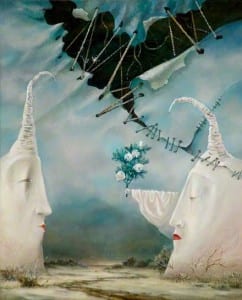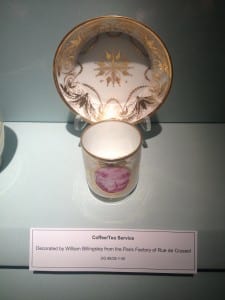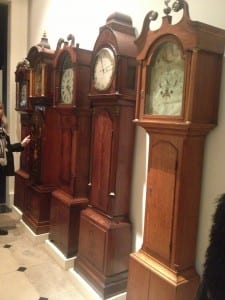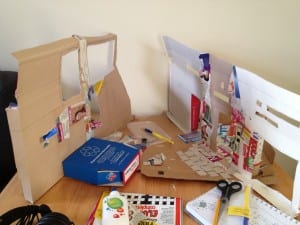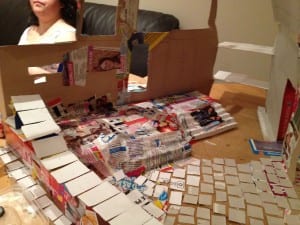This week we formed performance groups and decided where we wanted to perform in the Collection Gallery. As a few of us had chosen to study and research observations in the cafe, we decided this would be a good place to influence our performance. We conferred our experiences of the cafe and exchanged what we had observed which stood out for us individually. This then lead to us mind mapping possible performance options. A few of our initial ideas include making and putting on an exhibition in the cafe as this is the only area in the two buildings which doesn’t resemble an exhibition and therefore would be interesting to subvert the usual connotations attached to a cafe. One of the ways we thought we could do this would be by putting texts next to the individual artefacts which is done throughout the Collection and Usher Gallery. A couple of members of our group had also noticed a painting in the Usher Gallery, ‘Bound By Love’ which they felt stood out to them, as the painting didn’t connect with the other paintings in the same gallery. Therefore, we decided we would try and incorporate and merge the painting into our performance with the cafe.
From our collective recorded observations we noticed people don’t seem to be observant of other people and appear in their own world. Therefore we thought our exhibition could be about observation- how people look at things but aren’t really seeing or how people shut themselves off from everyone else; both in the cafe and in society. After this I read the introduction of Theatre and Museums where Kirschenblatt- Gimblett says, ‘todays museum is a theater, a memory palace, a stage for the enactment of other times and places’ (Bennett, 2013, p.4).Therefore making me think our piece could represent the observations we have noticed and recorded in the cafe by acting our snippets from what we have seen and heard, therefore representing and re-enacting real life events which at the same time displays our and other people’s memories of the cafe.
This then caused us to think of a research question to help us develop our ideas and create a focus for our piece, ‘How can you integrate the exhibitions and cafe into the performance area? What effect does this have and what atmosphere does it create?’ This then gave us further questions which lead to some answers on how we were going to develop our piece. We took inspiration from the painting and realised the architecture of the buildings (the cafe and the education room) were similar to the faces in the painting. The distance was similar and made us think of the distance between each person who visited the cafe and the outside world. We thought a good way to physically connect the building with the picture would be to use string and create a similar stitch pattern like the one in the painting.
BBC (2013) Your Paintings, Online: http://www.bbc.co.uk/arts/yourpaintings/artists/alexei-grigoriev (accessed: 2nd February 2013)
Bennett, Susan (2013) Theatre and Museums, Basingstoke: Palgrave Macmillan
